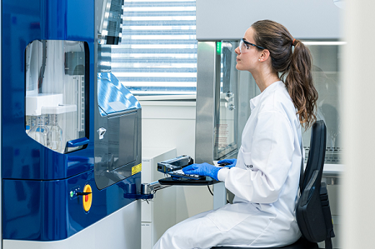Going From DNA To IND In 11 Months*
By Dominik Wegmann, Senior Director, Head of Mammalian Development Services programs, Lonza Visp and Matthew Minakowski, Director of Commercial Development for Mammalian Clinical Development, Lonza

Surmounting the various challenges that define the biopharmaceutical manufacturing space means stacking the odds in a project’s favor. One of the biggest ways a company can work to maximize their chances of success is in partnering with a contract development and manufacturing organization (CDMO) that possesses the expertise and resources to balance risk with speed-to-market while managing project costs.
In a recent webinar, “Ibex®️ Design - DNA to IND in 11 Months Guaranteed*,” experts from Lonza, a global partner to the pharmaceutical, biotechnology, and nutrition markets, convened to explore how it is able to guarantee customers five months from DNA to tox drug substance, and 11 months to Investigational New Drug Designation (IND) filling for antibodies, using its Ibex®️ Design 2.0 Program. The Ibex®️ Design 2.0 Program uses state-of-the-art cloning and expression technologies, coupled with Lonza’s approach of conducting parallel workflows that integrate its drug substance and drug product services, to achieve reduced timelines, mitigate development risks, and ensure companies have submission-ready CMC package in-hand when they’re ready to apply for an IND.
Pursuing parallel cell line and drug substance process development is one of the key strategies biopharmaceutical companies can employ to save time without increased development risks. Lonza’s Ibex®️ Design workflow relies on state-of-the-art process platforms, which ensure straightforward scale-up to cGMP manufacturing, as well as new, innovative technologies and workflows that further reduce the development time and improve the overall productivity. This secure, validated approach helps companies achieve faster timelines with the expected level of quality assurance.
Get unlimited access to:
Enter your credentials below to log in. Not yet a member of Bioprocess Online? Subscribe today.
